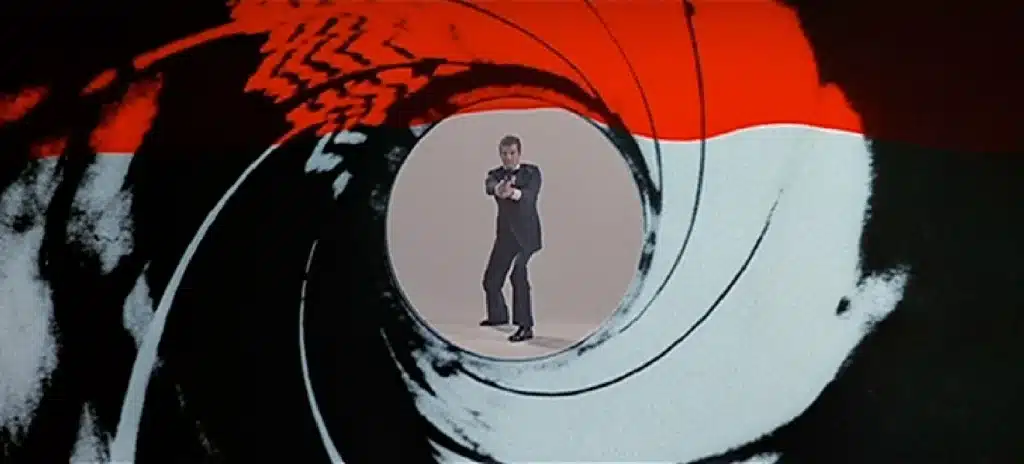Blood is a constant in James Bond movies, starting in 1962 with the classic opening, used through fifty years, which shows Bond walking, viewed down the barrel of a gun, Bond firing at shooter, and blood seeping down the screen.

Our amazing archivist Richard Atwood of North Carolina has found an obscure link to James Bond and hemophilia! Author Ian Fleming of England created the Bond character, who appeared in 14 books, starting with Casino Royale in 1953. The 25 movies that followed become cinemagic legends. What does Bond have to do with hemophilia, besides hemophilia being the “Royal Disease”?
In a letter dated April 25, 1962, and addressed to Robin de la Mirrlees, Esq., author Ian Fleming wrote:
“Now to the book. First of all many thanks about haemophilia, it was stupid of me to have got it wrong.” (p. 324).
Ian Fleming contacted many sources to confirm the accuracy of information while in the research/writing phase of his James Bond novel On Her Majesty’s Secret Service (1963). What Ian Fleming initially wrote about haemophilia, and what he got wrong, are unknown. That correspondence is absent. Robin de la Mirrlees (1925-2012), a Scottish aristocrat, to whom he mentioned hemophilia, seems to have been the role model for the fictional James Bond. Robin de la Mirrlees held the title of Rouge Dragon Pursuivant of Arms in Ordinary, The College of Arms, London at the time of their correspondence.
The mention of hemophilia is found in a book by Flemming’s nephew, Fergus Fleming, The Man with the Golden Typewriter: Ian Fleming’s James Bond Letters.* This collection is dated 1952 to 1964. The Ian Fleming correspondence is organized by each movie, with the editor providing background commentary. The title refers to the actual gold typewriter that Ian Fleming acquired in 1952. Ian Fleming died in 1964. Only the first three Bond films were produced while Ian Fleming was still alive.
Hemophilia is also referencedin the novel On Her Majesty’s Secret Service.** While discovering information about the criminal mastermind Ernst Stavro Blofeld, who appears in several of the Bond novels and in the movies, Bond consults with Sable Basilisk at the College of Arms in London. Bond plans to interview Blofeld in Switzerland under the guise of clarifying official business of the College of Arms. Basilisk provides the example of comparing family traits to determine rightful lineage. Basilisk states:
“You see, in some families there is a strong physical characteristic that goes on inevitably from generation to generation. The Habsburg lip is a case in point. So is the tendency to haemophilia among the descendants of the Bourbons. The hawk nose of the Medici is another. A certain royal family has minute, vestigial tails The original maharajahs of Mysore were born with six fingers on each hand. I could go on indefinitely.” (p. 68)
Basilisk then points out that none of Bloefeld’s lineage had lobes in the ears. When they eventually meet in Switzerland, Bond notes that Bloefeld has no lobes (p. 103).
Use of the word “tendency” is confusing when the genetics of hemophilia were known. The movie does not mention hemophilia. Yet movie dialogue highlights ear lobes.
For Bond fans, the love song in the movie On Her Majesty’s Secret Service is “We Have All the Time in the World,” written by John Barry and sung by Louis Armstrong. It was the song I chose for my wedding song in 1986, and also appears at the beginning and end of the final James Bond movie, No Time to Die (2021).


*Fergus Fleming, Editor. The Man with the Golden Typewriter: Ian Fleming’s James Bond Letters. New York, NY: Bloomsbury Publishing, 2015. 392 pages.
**Fleming, Ian. On Her Majesty’s Secret Service. Sevenoaks, Kent, Great Britain: Hodder and Stoughton,1963. 238 pages.

